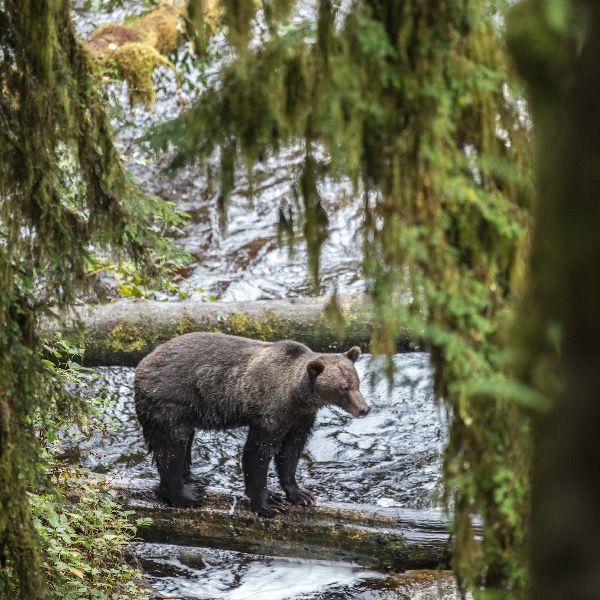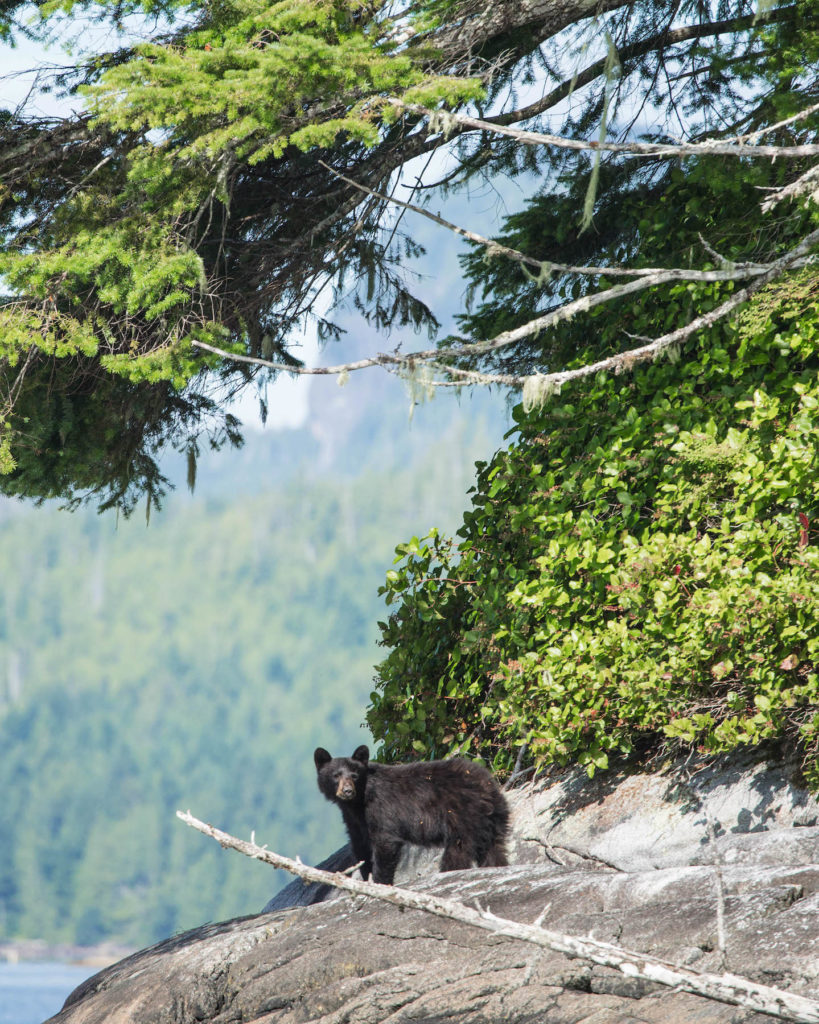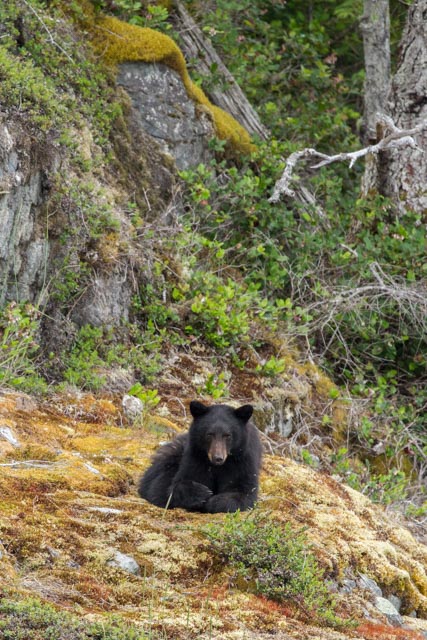Canada’s most westerly province, British Columbia, stretches from the Pacific Ocean in the west to the Rocky Mountains in the east, covering some of the most diverse wildlife habitats in all of North America. This inviting mountains-to-ocean blend of awe-inspiring backdrops draws nature enthusiasts from near and far. With exciting opportunities to watch whales and bears in their natural environment, it is no wonder why BC’s coast is renowned as one of the greatest wildlife viewing destinations in the world.
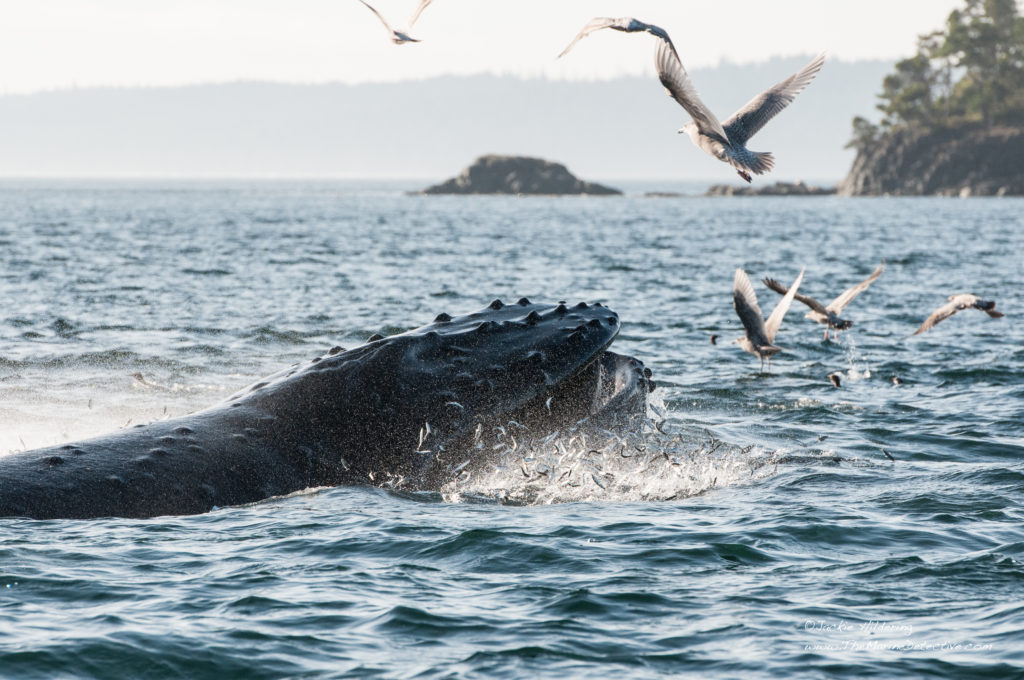
Over 25 thousand kilometres of Pacific coastline shapes the province’s geography, from island archipelagos, deep channels, and expansive fjords. Fast moving ocean currents and productive waters support abundant marine life and host impressive populations of whales. Migratory whales embark on an annual journey between warmer, tropical seas, where they spend the winter mating and calving, towards cooler, temperate waters to feed over the summer. Marine wildlife thrives in all reaches of coastal BC, as nutrient-rich upwellings fuel marine food chains from the bottom up. Gray whales sift the shallows, humpback whales feast on small schooling fish, and killer whales cruise the coast – offering exceptional whale-watching experiences.
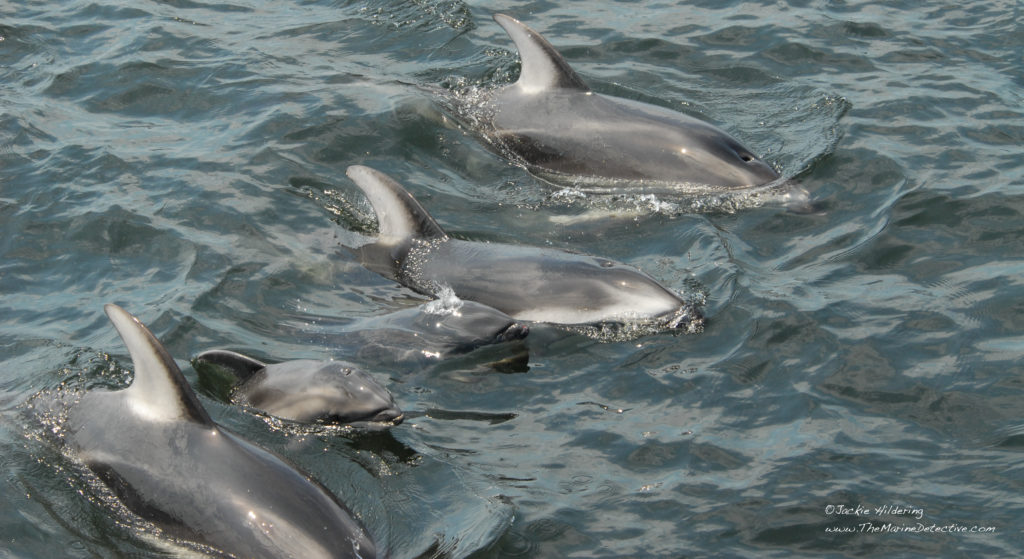
Along the coast, land and sea converge to play an integral role in this unique ecosystem. The coastal waters of BC are home to several species of wild salmon, which after swimming out to sea, return to their rivers to spawn upstream in the late-summer and autumn months. This annual homecoming draws bears and other animals from the forest to the salmon streams, as they gather and prepare to feast for the winter ahead. BC is one of the world’s last places to see wild bears in their natural habitat. During these remarkable salmon runs, bear viewing tours are often land-based from various platforms along streams. Boat-based excursions, operating seasonally, explore calm inlets, rocky shorelines, and intertidal marshes, offering visitors a unique vantage point as bears forage along the low tideline. With its untamed backdrops and extraordinary wildlife viewing opportunities, it comes as no surprise that wilderness tourism is a significant and growing driver of travel within BC.
In 2017, the Adventure Travel Trade Association (ATTA) reported ecotourism as having the highest level of client demand overall for travel activities, followed by cultural and environmentally sustainable activities. According to the Rainforest Alliance, nature-based tourism accounts for about 20% of international travel. As a significant and growing sector of nature-based and ecotourism, wildlife viewing does not come without its challenges. The World Tourism Organization’s 2014 Global Report on Adventure Tourism found that adventure travellers rank areas of natural beauty as the most important factor in choosing their most recent destination, searching out environments that are pristine, wild, and unique. As more people visit relatively untouched natural areas, without guidelines and considerations, animals can become distressed and their habitat, degraded. Responsible wildlife viewing demands that the actions of individuals, groups, and tour operators do not cause an animal to change their normal behaviour. Jackie Hildering, of the Marine Education and Research Society (MERS), explains that “the great truth is that the best possible experience happens as if you were not there.”
Within the parameters of wilderness tourism, the safeguarding and preservation of wildlife should always take precedence, while human activities become secondary.
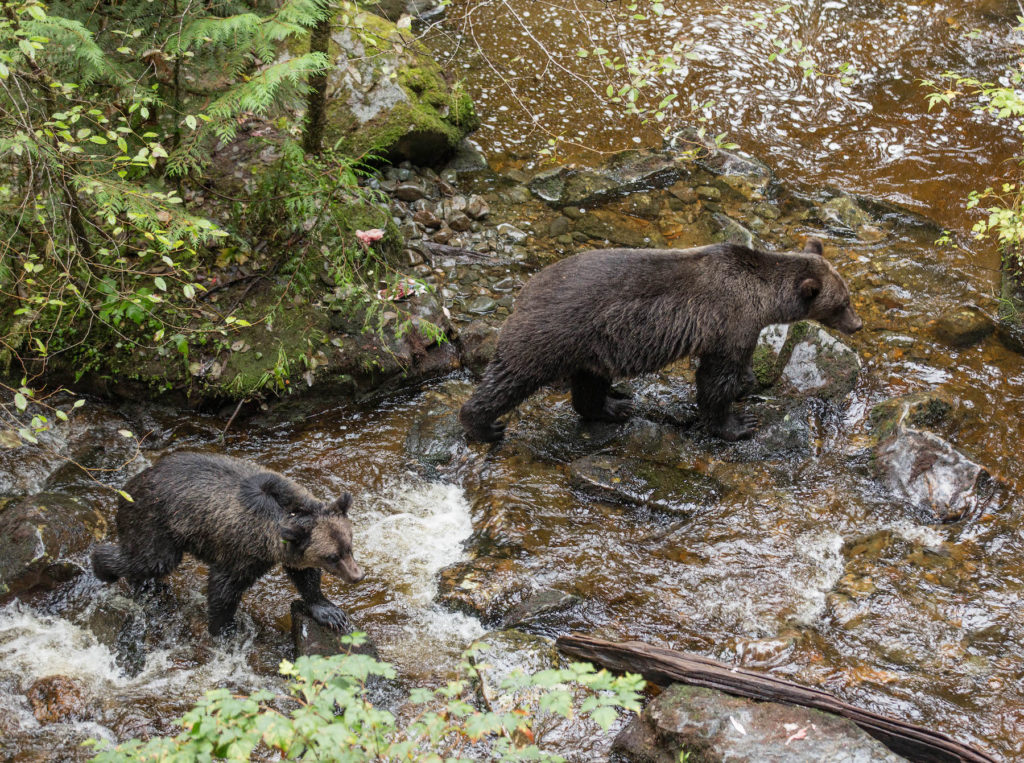
In the wild, animal sightings are never guaranteed, yet visitors see brochures and advertisements prior to speaking with tour operators and this shapes unrealistic and uninformed expectations from the start. The media plays a crucial role, as photos of humpback whales breaching next to a kayak, killer whales surfacing alongside a tour boat, and grizzly bears within a few meters of humans, combined with uneducated narrative, splash across newspapers, social media, and online videos. As the popularity of wildlife viewing grows, the promotion of such interactions only increases the demand and expectation for these dangerous and infamous “up close and personal” encounters. Despite what the media may portray, whales and bears in the wild do not “put on a show” for humans. In a sense, the media has been known to reward unethical wildlife viewing activities and those who partake in it for the sake of selling a story. Hildering reports that the problem with this type of marketing is threefold: it feeds consumer demand for wildlife watching experiences that are not good for the animals, it creates false expectations and miseducation, and it creates a “marketplace” where other companies with more solid ethics face the dilemma of how to counteract such advertising and aid consumers in making a better choice.
The Wilderness Tourism Association of British Columbia (WTABC) states that throughout the province, and “in the spirit of environmental stewardship, wilderness tourism operators are adopting practices that will ensure the sustainability of the industry and the natural environment on which wilderness tourism depends.” With an increasing number of tour operators in BC, it is important that visitors who wish to participate in wildlife viewing activities do their research. A reputable tour operator will not only adhere to responsible wildlife viewing guidelines but also explain why it is important to do so. Other factors to consider when inquiring include guide training and qualifications, as well as a company’s principles and approach. If guests show interest in wildlife photography, operators should share the benefits of using a camera with a zoom or telephoto lens, based on minimum distance regulations, and always offer the use of binoculars.
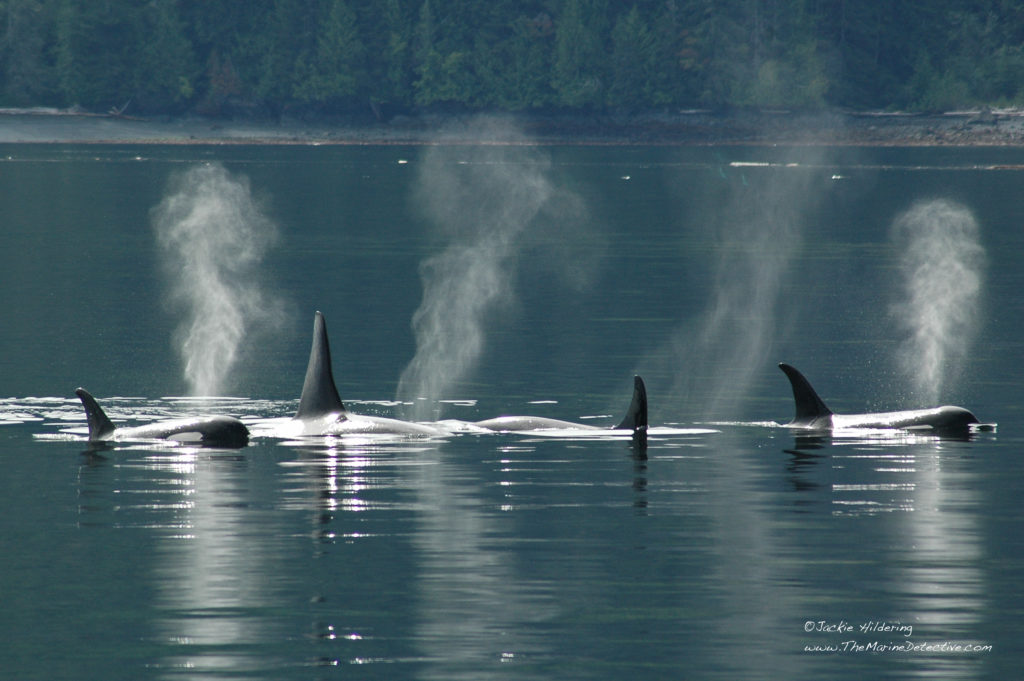
Marine Mammal Regulations, implemented by Canada’s Department of Fisheries and Oceans, are imposed to ensure that whales and marine mammals can still be enjoyed from a safe distance and without influencing their behaviour in any way. Keeping a minimum distance is the law and strict regulations are enforced by federal officers. As of 2019, the rules for whale watching include a minimum approach distance of 100 metres for most whales, dolphins, and porpoises, to legally protect these animals from human disturbances. In BC, killer whales have additional and varying approach regulations, starting at a minimum of 200 metres, due to special management and critical habitat zones.
MERS, based on northern Vancouver Island, is a registered Canadian charity dedicated to promoting conservation and understanding of marine ecosystems through scientific research, environmental education, and marine wildlife response. They are the leaders behind the campaign and catchy phrase, “See a Blow? Go Slow!”, which has translated into a greater awareness around boater safety in the presence of marine wildlife. MERS is a member of the North Island Marine Mammal Stewardship Association (NIMMSA), along with representatives from other organizations that operate in the northeastern Vancouver Island region between western Queen Charlotte Strait and the northern Strait of Georgia. NIMMSA has been conducting stewardship activities aimed at benefiting marine mammals and the marine-based ecotourism industry off northern Vancouver Island since 2007. As stewards, it is important that NIMMSA members set realistic marine mammal viewing expectations, while educating others on best viewing practices. It is a policy of NIMMSA not to promote imagery of whales in close association with vessels. Hildering reflects that “responsible and sustainable wildlife viewing is to have a code of conduct where there is no imagery exploiting or language objectifying whales and wildlife.” She emphasizes the importance of not perpetuating notions of “up close and personal”, “accidental” encounters within distance limit, or “it is okay if they approach us.” Rather, NIMMSA members are channels of knowledge and leaders of positive action, only sharing content that reflects responsible viewing operations, educating clients on why this is important, and encouraging them to do the same.
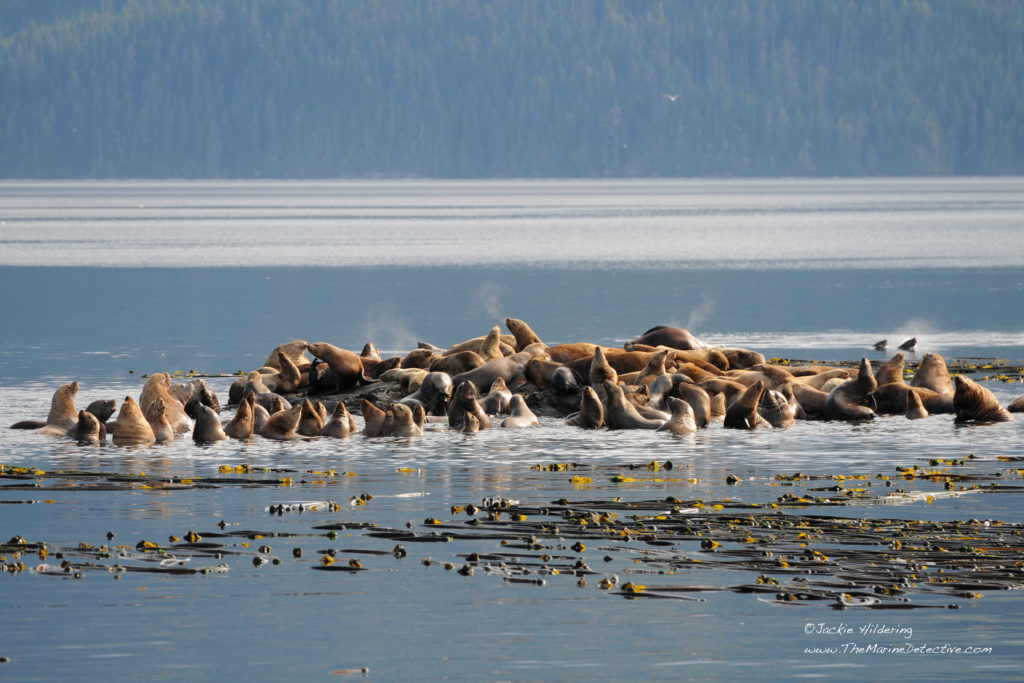
In the early 1990s, bear viewing was introduced in BC as an organized tourism activity and has steadily grown in popularity ever since. In 2001, the Commercial Bear Viewing Association (CBVA) was “formed to promote sustainable bear viewing in British Columbia and aid in the protection of wild bears and their ecosystems.” In the early days, there were no guidelines on how to safely view bears in the wild and founding CBVA members recognized this as an opportunity to advance the industry. As new research, experience, and ethics dictate, CBVA members have adapted and established bear viewing strategies and techniques which they believe to be highly effective, continually advocating a respectful approach towards these wild animals. “Responsible tourism is what is important,” explains Katherine MacRae, CBVA’s Executive Director. “Sustainable tourism is not just about sustaining an activity; it is more about managing numbers and ensuring the bears are not stressed. Tourism and numbers should never trump a bear’s comfort and personal space. It is our carrying capacity that is at play in the wild, not the wildlife.”
In ongoing consultation with industry, government, and respected bear biologists, CBVA members have developed best practices and a code of conduct. In 2005, the CBVA introduced their extensive guide certification program which today, has developed into three levels. This well-established curriculum supports properly trained and certified guides who are familiar with bear biology and behaviour, have demonstrated effective communication and human management skills, acknowledge the risks, show a sensible approach to safety, and understand an appropriate response to accidents or emergencies, while managing non-disruptive interactions with bears and the carrying capacity of their habitat. Under the association’s best practices, it states that “member companies will strive to meet the CBVA goal of safely viewing bears in a natural setting while minimizing impacts on them, and encourage the general public, other operators and film crews to do the same. An animal’s need to forage, rest, or travel should take precedence over viewing activities and guests’ desire to get a closer look.”
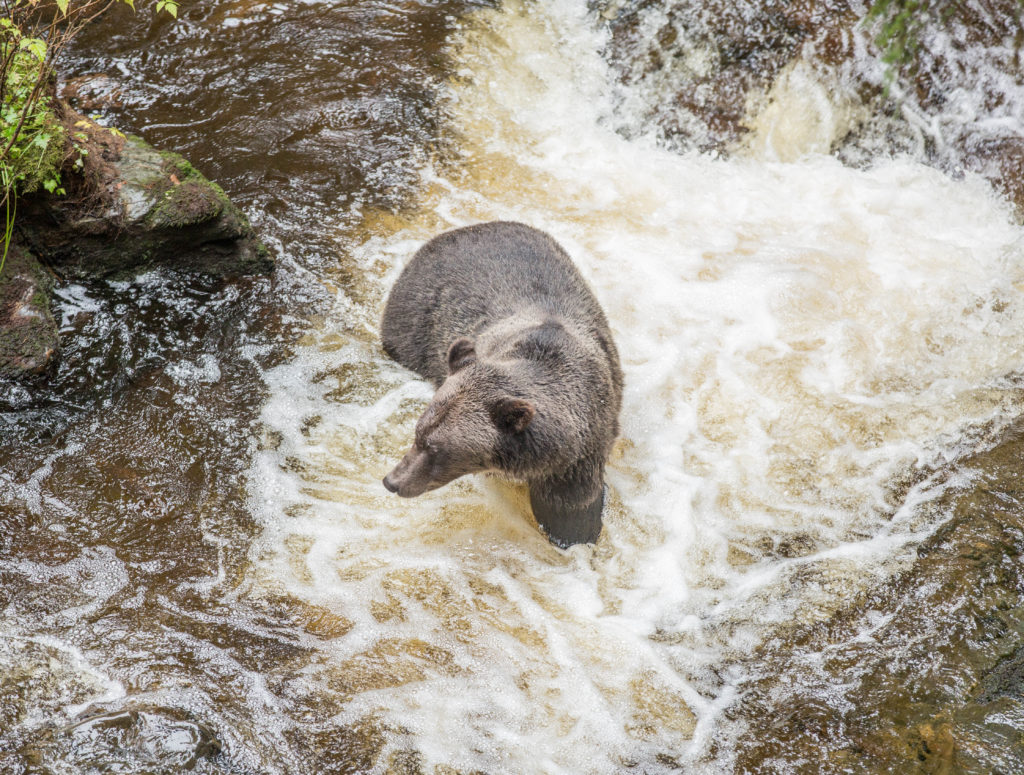
Appreciably more than a region’s natural resource, wildlife is an opportunity to educate, through responsible and ethical practices, about biodiversity, interconnections, and threats. With an ever-growing supply and demand, it has never been more critical for wilderness tourism to be implemented responsibly. Developing formal training, following best practices, promoting experiences accurately, partnering with local conservation and research projects, all lend to a progressively accountable industry in which the interests of wildlife come before business.
In 2017, the ATTA reported that the majority of adventure travelers are focused on being in a natural environment, learning, and taking part in meaningful experiences. Wildlife viewing in BC can, when done ethically, deliver on all of these points. The success of any wildlife viewing operation is enhanced by well-informed visitors who understand the negative implications we, as humans, can have on the environment. Recognizing this as an opportunity within the industry, tour operators have a responsibility to add elements of educational value and, in turn, deliver more meaningful experiences.
When visiting BC, the call of the wild, and the wildlife, is a powerful one. By asking the right questions and seeking reputable tour operators, it is possible to view wildlife in a way that protects, conserves, and enhances their existence. Observing wild animals, from a safe distance, as they go about their day-to-day lives creates a profound sense of respect and appreciation for the natural world. When implemented ethically and responsibly, wilderness tourism has the remarkable potential to change attitudes, shift perspectives, and inspire greater stewardship towards all who roam this planet.
“In the end, we will conserve only what we love; we will love only what we understand and we will understand only what we are taught.”
– Baba Dioum
Words: Caitlin Hedley
Photos: Adrien Mullin and Jackie Hildering
